
Joanna van der Lande
Joanna van der Lande has worked in the art and auction business for over 30 years. Having read Ancient History and Archaeology at Birmingham University in the 1980s she set up the Antiquities Department at Bonhams Auction house, London in 1990. She served on the UK Ministerial Advisory Panel on Illicit Trade (ITAP) from 2000 until it was disbanded in 2006. It was ITAP who advised the UK Government to accede to the 1970 UNESCO Convention. She is current Chair of the UK based Antiquities Dealers’ Association. She advised the UK Government on aspects of the Cultural Property (Armed Conflicts) Act 2017. She regularly chairs vetting committees at London based art fairs. She is an independent consultant providing valuations and advising on authenticity, provenance and political issues affecting the antiquities market, while also acting as a valuer to the Treasure Valuation Committee, the Government body responsible for establishing the value for UK treasure finds.
This is Part 3 of a three-part article and contains the following sections:
- The law and the market
- Developments in the European Union – EU Import Regulations (EU)2019/880
- Developments in the United States – the Antiquities Coalition and the Manhattan DA
- Seizures: raiding art dealers and art fairs in Europe
- The legitimate trade today
- Finding a way forward: orphans and fair compensation
- In Conclusion
- Part 1, definitions, academic relations, orphan antiquities, the 2000 date, and source country export licenses.
- Part 2, archives, transparency and changing practices, fighting crime, false data, seizures, and the internet.
The law and the market

Objects seized in four-year investigation of a smuggling ring trafficking Sicilian artifacts. Photo screenshot from video “Operation Demetra” by Carabinieri TPC. July 2018.
The antiquities trade has been vilified for years and in a way that no other single sector in the art market has been. We have been the “canary in the coal mine” – an early warning of threats to the art market. While there has always been an armoury of laws in existence to which the trade has been subject, there is a perception that the art market has been outside the law, but this is factually incorrect. With the new anti-money laundering regulations in the UK and Europe (5AMLD), the impact of bringing the art market into the regulated sector should not be underestimated, although with little real understanding of the complexities of trading in often small movable objects this is going to cause significant problems for already struggling businesses. We find it particularly hard to accept the unwillingness of many to really understand how the legitimate market – that is the intermediary between previous owner and future owner – has operated for generations and why provenance information has frequently not been retained. For those not acquainted with the art world there appears to be a fear and suspicion of “the other”, with misconceptions about the privilege and wealth of those in the art market.

Statue of Togatus discovered in an antique shop in Belgium by Carabinieri, Photo Carabinieri Command for the Protection of Cultural Heritage, 2021.
Globally, aside from the larger auction houses, the trade is mostly made up of micro to medium-sized businesses. While the UK has a well-developed mechanism for the trade to communicate with UK government departments via the British Art Market Federation (BAMF)[99], this is not replicated in most other countries. And while there might be a perception the art market is powerful, this is not how it feels from within the art market.
The UNIDROIT Convention has not been ratified by major market countries, but many of its principles have become a benchmark within new legal frameworks, even if they are not accompanied by the benefits of protecting private individuals from claims or the provision of compensation. These laws must be interpreted correctly and administered with fairness and justice. As Prof. Raimund Karl puts it, “The removal of objects from bona fide owners without due compensation is wrong in law and wrong morally. If laws and protections ….are broken this, in my view, does not right a wrong but creates a greater wrong by bringing the law into disrepute.” (English Translation)[100]
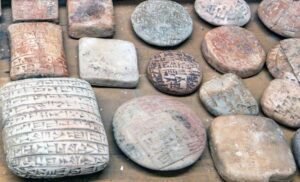
Fake cuneiform tablets seized by HM Customs and identified by British Museum experts. ©The Trustees of the British Museum.
Other objects, though legally on the market, face the condemnation of trade critics, some of whom have publicly stated they seek to destroy the value of an object by publishing articles about objects if they do not have a satisfactory provenance. The same people regularly tip off the police who are obliged to follow up cases, even when there is no clear evidence of wrong-doing. This is creating a perception there is a disproportionate amount of illicit activity within the antiquities market compared with the rest of the art market, when antiquities makes up less than 0.5% of the global art and antiques market.
Developments in the European Union – EU Import Regulations (EU)2019/880
The legitimate antiquities trade does not deny that looting takes place and does not seek to condone it in any way. Any right-minded person must be clear on this. However, the headlines simply do not hold up to close scrutiny. Yet it is largely these headlines which have caused governments to react and the EU to introduce further regulation and restrictions to the art market with particularly dramatic effect on the antiquities market. Are these proportionate to the size of the market or the problem, as required under strict guidelines set by the European Commission president?
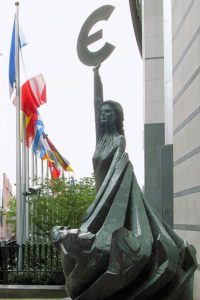
The Paul-Henri Spaak Building, (Brussels office of the European Parliament). Steve Cadman from London, U.K.derivative work: Parzi, Wikimedia Commons.
Many objects of non-EU origin will not be able to be imported into the EU once the EU Import Regulations (EU)2019/880[101] fully come into force as is expected in 2025. These include all archaeological items and elements of artistic and historical monuments which include icons and freestanding religious statues over 250 years of age (Annex Part B). No financial threshold will apply. This means every single scarab or broken pottery head or sherd would need a licence to enter the EU, which in itself is overly burdensome for all parties concerned, including customs. The application for an import licence, in Article 4.4 of the Regulation, requires that:
“….. The application shall be accompanied by any supporting documents and information providing evidence that the cultural goods in question have been exported from the country where they were created or discovered in accordance with the laws and regulations of that country or providing evidence of the absence of such laws and regulations at the time they were taken out of its territory.”
“By way of derogation from the first subparagraph, the application may be accompanied instead by any supporting documents and information providing evidence that the cultural goods in question have been exported in accordance with the laws and regulations of the last country where they were located for a period of more than five years and for purposes other than temporary use, transit, re-export or transhipment, in the following cases:
(a) The country where the cultural goods were created or discovered cannot be reliably determined; or (b) the cultural goods were taken out of the country where they were created or discovered before 24 April 1972.”
With original export documentation so rarely retained as evidence dating back to the original point of export, the derogation will be applied in most cases, and with documentation generally lacking as far back as 2000 or 1993, let alone to 1972, I find it hard to see in what circumstances an Import Licence would be granted with often only anecdotal evidence of long-standing provenance known. As yet, it is not known what documentation will be deemed acceptable evidence. It seems perverse at best to create a situation where legitimately owned and traded cultural property will be barred from entering the EU. While not seemingly retroactive aspects of the enforcement of the EU Import Regulation clearly are.

The Hemicycle of the European Parliament in Strasbourg during a plenary session in 2014.
While some might feel this is a price worth paying to make EU borders watertight, others might feel uncomfortable that people’s freedoms are being curtailed. It should make us question whether Article 17 of the Charter of Fundamental Rights of the European Union (2012/C 326/02)[102] is being broken.
The Charter states:
“Everyone has the right to own, use, dispose of and bequeath his or her lawfully acquired possessions. No one may be deprived of his or her possessions, except in the public interest and in the cases and under the conditions provided for by law, subject to fair compensation being paid in good time for their loss. The use of property may be regulated by law in so far as is necessary for the general interest.”
Or indeed Article 17 of the Universal Declaration of Human Rights[103] which declares:
“1) Everyone has the right to own property alone as well as in association with others.
2) No one shall be arbitrarily deprived of his property.”
With the enshrining of the 24 April 1972 date in this new European law, it appears to override national laws by making this a legally binding date regardless of the date a country ratified the Convention, with some doing so only as recently as 2019.[104] Will this Regulation only apply to property from the date the Regulation enters into force (Article 16) with proof of circulation at that date sufficient to obtain a licence or will the requirements laid out in Article 4 be retrospectively applied with all that implies? Applying dates retrospectively affects items that are otherwise legitimately in circulation, not just those which have been looted. There is a real danger that truth and transparency will be the victims, to the detriment of scholarship and knowledge.[105]
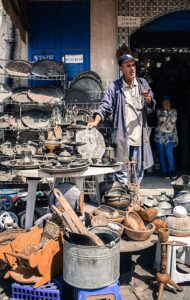
Antique salesman, Tunisia, Author Monaam Ben Fredj, 17 September 2017, CCA-SA 4.0 International license, Wikimedia Commons.
Under Article 5, goods of non-EU origin have financial thresholds of €18,000 applied under the Annex Part C, which curiously includes ‘antiquities’ as part of this list, yet this still poses a considerable challenge to those dealing in the wider art market. Most disciplines in the art market have not been as prepared as the antiquities market and on the whole retain even fewer records of ownership. With a lack of evidence available, it remains a huge challenge for the art market and a significant restriction on the liberties of EU citizens.
Any EU citizen traveling outside the EU for holiday, work or indeed to live, will not be able to bring back some of their purchases or perhaps their own pre-owned possessions into the EU without either an Import Licence or an Importer Statement with all that entails; they may well not fulfill the criteria to successfully import these goods. It will certainly have an impact on what EU citizens purchase in the UK, which will not be implementing the Import Regulations and will therefore be treated as a third country. It will create similar difficulties with imports from the USA and China; these are the three largest art markets. With short and sometimes spontaneous trips to the UK, the new Import Licensing system will make it impossible to drive across the border into the EU with artworks requiring an Import Licence.
One has to wonder whether EU officials are trying to discourage the movement of privately owned cultural property; an official from the EU Commission said as much to me. What is likely to happen is that other markets will develop outside the EU and in all probability the goal of greater transparency will become less attainable. Unfortunately, the criminally-minded won’t be the ones applying for Import licences or Importer Statements and will simply go elsewhere, as the RAND Corporation Report suggests.[106] The loss of knowledge and data to largely unregulated markets will be irrecoverable.
Developments in the United States – the Antiquities Coalition and the Manhattan DA
In recent years the situation in the United States has been no less troubling for the trade or for anyone who cares about the rights of individuals; with campaigns against the trade escalating following the Arab Spring, which led not only to political and civil unrest but to periods of looting.

U.S. Army Brig. Gen. Michael Lally and Col. Dan Hokanson lead soldiers down steps of the Ziggurat of Ur. Iraq, July 31, 2009. Photo by Spc. Cory Grogan.
The US based Antiquities Coalition, founded by Deborah Lehr in 2011 regards itself as:
“…. leading the international campaign against cultural racketeering, the illicit trade in ancient art and artifacts. We champion better law and policy, foster diplomatic cooperation, and advance proven solutions with public and private partners worldwide. We are working towards a future when the past is preserved for the next generation, not looted, smuggled, and sold to finance crime, conflict, and terror.”[107]
These are aims with which the antiquities trade can only agree. The Antiquities Coalition has funding and influence and has been extremely effective in raising the profile of the problem. However, it consistently fails to acknowledge that antiquities have been traded legitimately for many centuries or to engage with the legitimate trade as part of the solution. When it talks of finding solutions with public and private partners, this does not mean with the trade. It has contributed to perpetuating the myth that there is an illicit trade in antiquities worth billions of dollars which funds terrorists.
The RAND report notes that “The fundamental problem, as Deborah Lehr of the Antiquities Coalition has observed, is that, as with most illicit markets, “there’s no real information or statistics on the size of this illegal trade.” [108]
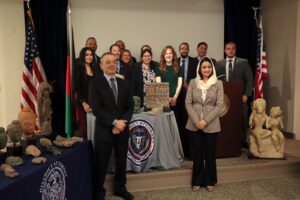
Ambassador Roya Rahmani and Manhattan Assistant DA Matthew Bogdanos at a repatriation ceremony April 20, 2021. Photo: Embassy of the Islamic Republic of Afghanistan, Washington DC, April 2021.
Having attended a meeting and observed conferences at which U.S. Marine Corps Reserve Colonel Matthew Bogdanos has been a contributor, he speaks with both conviction and authority. Bogdanos leaves no room for questioning his stance, stating that everything he says is based on first-hand experience drawn from what he has seen and heard. The RAND report notes Bogdanos as the single source, basing his evidence on his experiences during the Iraqi civil war, linking the smuggling of illegal weapons with antiquities, stating they tend to share similar routes, shipments and dealers with many antiquities researchers sharing this assumption, but noting “there is little evidence to support this conclusion.”[109] While he clearly did some great in work in Iraq helping to recover artefacts taken from the museum while a serving officer in the early 2000s, I do not believe this exempts him from providing evidence for his assertions in 2020.
Bogdanos is a lawyer and currently Assistant District Attorney in Manhattan and it is in this capacity the antiquities trade has come to know of him, especially since he set up a dedicated Antiquities Unit. He speaks in the US and abroad at conferences concerning the illicit trade, attending an EU Workshop on Protecting Iraqi Cultural Heritage in May 2018. I spoke to him privately asking him some questions including whether anyone had claimed or received the $5 million reward, under the US Rewards for Justice Programme,[110] for information leading to the significant disruption of the sale and/or trade of oil and antiquities to benefit Daesh, but was told this information was ‘classified’. He did tell me he only ever acts when he has a cast-iron case and is right, which unfortunately leaves little room for debate – he was then called off to a press photo shoot. He has gained quasi-celebrity status.
[Ed. James McAndrew, former senior special agent at the Department of Homeland Security (“DHS”), US Customs and Border Protection and the originator of its art crime program, asked the same question of current agents at an art crime panel in 2018 and was told that the number of rewards was zero.]
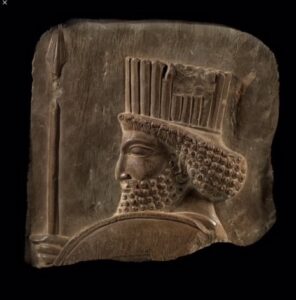
Fragment of a wall frieze from Persepolis, owned for fifty years by the Montreal Museum of Fine Arts, sold to its insurer, and later seized in New York, then returned to Iran in 2018. Photo: Montreal Museum of Fine Arts.
Bogdanos takes a very bullish attitude towards the trade, supporting claims from source countries over the ownership rights of collectors and dealers in New York. This has led to confiscations without compensation and court cases which have undoubtedly de-stabilised the market in New York. Observers can only assume this is intentional.
A disturbing case took place at Tefaf New York in 2017, which involved armed law enforcement raiding a dealer’s stand on the opening night. An Achaemenid relief was the subject of the search, the relief dated back to circa 518-330 B.C. It had previously been on public display in the Quebec National Museum from 1951, where it was exhibited until it was stolen in 2011 and later recovered, becoming the property of the museum’s insurance company who sold it to the renowned London-based art dealer Rupert Wace. No compensation was paid by the Iranian authorities when it was returned, and legal costs to fight these cases soon run into hundreds of thousands of dollars which few can afford to pay. It was a shocking experience for Wace. Cultural Property News has covered other cases where seizures have been made from collectors and dealers.[111]
One case which did go to court involved the Anatolian marble idol, known as the Guennol Stargazer, which sold at Christie’s in New York in 2017 for $12.5 million. It attracted the attention of the Turkish Government, which filed a suit to prevent its sale at auction. A court case ensued, which allowed the sale to take place, but
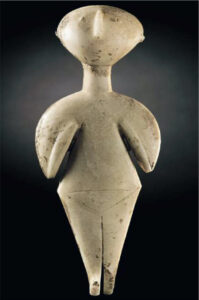
An anatolian marble female idol of Kiliya type, known as the Guennol Stargazer. Chalcolithic period, c. 3000-2200 BC. © Christie’s.
Christie’s agreed not to release the object to the buyer for 60 days after the date of the sale to enable Turkey time to put forward evidence of illegal export[112]. While this case is ongoing, it has created an uncomfortable legal precedent in the State of New York where long-term loans to a public museum would not bar potential claims from a source country even after a long period of time on public display when no prior claim has been made. The Turkish Government turned to the media and public opinion to state its case.[113]
Complex legal cases, such as this – and there are others ongoing – demonstrate how the collecting, dealing and auction environment is becoming ever more complex to navigate. There is little mention of fair and reasonable compensation for the good faith purchaser (UNIDROIT Article 4). With an unclear definition of what constitutes “good faith”, it would be useful to know how often compensation has been paid to the good faith purchaser by a source country. Under UNIDROIT there are clearly set-out protocols, under Article 3 of the Convention, concerning the Restitution of Stolen Cultural Objects. One wonders whether the Wace relief and the Guennol Stargazer would have been subject to restitution claims had the United States ratified the UNIDROIT Convention.
Seizures: raiding art dealers and art fairs in Europe
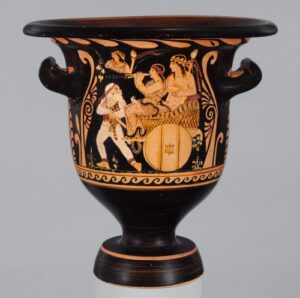
A seizure by the Manhattan District Attorney’s office interrupted a repatriation-in-process at the Metropolitan Museum in 2017. Terracotta bell-krater attributed to Python: ca. 360–350 BCE, Greek, South Italian, Paestan, The Bothmer Purchase Fund, 1989, Metropolitan Museum of Art, New York
There have been similar developments in European art fairs where dealer premises have also been raided. The art dealing and collecting community were shocked when the Brussels Antiques and Fine Arts fair (BRAFA), held early in 2020, was paid an unusual and heavy-handed visit by the Federal Public Service (FPS) for Economy and Customs,[114] with objects seized that had already been vetted off the fair because they had not met the fair’s standards for one reason or another. There seemed to be a lack of understanding of the processes surrounding fair vetting. As with Tefaf New York, the raid took place in front of the public at the opening and with Tefaf Maastricht fair in March 2020 also suffering seizures by the Dutch National Police, a pattern seems to be developing.
Dealers’ galleries have been raided with property seized; private homes of collectors and dealers have been raided with families intimidated, some at 6 o’clock in the morning. Members of the trade are being treated like common criminals, some held under counter-terrorism laws, allowing them to be detained for longer. Meanwhile academics regularly take photographs of objects on dealers’ stands at fairs with one recently giving false names to different dealers who grew suspicious and tracked him down to working for a prominent museum in the UK. Each of these scenarios occurred in 2020.
We hear of seizures in media headlines but not of convictions or seldom of what happens to seized objects, which are often then quietly returned to the dealer or collector, but by then the reputational damage has already been done. It is destabilising and is creating a climate of fear, which is likely to be deliberate.
As Dr Tsirogiannis puts it in his interview with the Journal of Cultural Heritage Crime: “Ideally a message of absolutely no tolerance should be given, legally speaking. After all, we are in 2020, and an end to an illicit market should be put.”[115] The legitimate antiquities market would agree with his comments on an illicit trade, but he talks of the law and yet does not respect the law when objects are legally circulating on the market. He may regard them as being morally illicit, but this does not mean they are not on the market legally, often for decades. The rights of owners cannot continue to be ignored.
The legitimate trade today

Johann Zoffany, Charles Towneley in his Sculpture Gallery, 1782, Towneley Park, Burnley, Lancashire, England. Public domain.
The legitimate antiquities market has changed beyond recognition in the past 25 years and continues to do so. It has been all too easy to condemn how the trade operated in the past century, and with some legitimacy, but the willingness today to link the legitimate trade to funding terror, drug dealing and the illegal arms trade has been taken too far. It is clear there are those who have wanted to see an end to the private ownership of antiquities for years. These voices are drowning out the voices of those who are willing to support a long-standing but ethical trade in antiquities.
Although we have been saying this for some time, it is worth reiterating that if someone has deliberately contributed to the looting and trafficking of cultural property, they should face the full force of the law. I am talking about people who set out to break the law for profit. I don’t think I can make this any clearer but it is important to spell this out: the legitimate trade is acting in good faith.
It is my view that, unless the well-scrutinised and legitimate trade is supported and encouraged to flourish, there could be two profoundly negative results: driving the market underground, which would make it impossible to police, leading to the loss of a valuable partner in the fight against crime; and a failure to stop looting or protect cultural heritage.
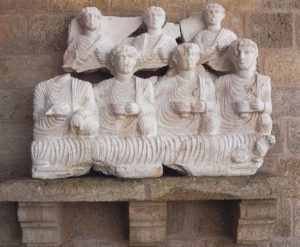
Palmyran funerary relief, Collection of Jawad Adra. Nabu Museum, El Heri , Batroun , Lebanon.
The truth is the legitimate antiquities market is amply served by millions of objects that have been in circulation for many decades, if not centuries. This cause-and-effect belief, that looting exists only because the market exists, is the basis of much of the hostility towards the trade, so it is important to address this issue. Regarding the level of demand, the RAND Corporation Report states: “25 percent of all the items offered at auction were not sold, either because there was no bidder or because the reserve price was not met. Although news stories have called attention to looted items that have appeared at auction over the past several decades, the statistics for the overall market suggest that auctions could act only as a limited conduit for illicit sales.”[116]
It is also worth bearing in mind that a long-standing provenance and track record contributes to the value of an antiquity. Conversely the lack of a verifiable provenance diminishes the value of an object or renders it unsaleable.
Finding a way forward: orphans and fair compensation
We are more than aware there are problems, with some inherited from a previous era and others current and ongoing. It is true that many practices considered acceptable a generation or two ago are viewed very differently now, but what would be wrong would be the continued demonization of the dealers, collectors and increasingly museums, which achieves nothing. With resources as they are, the focus should be on preventing recently looted objects from entering the market. This is achievable and has the whole-hearted support of the legitimate trade.
Critical to this and to building trust and greater transparency is resolving the status of the “orphan” antiquities circulating on the market. We want to root out any criminal activity which is spoiling it for the rest of the market and damaging our reputation, but there needs to be a fair and realistic solution for these objects.

First and foremost a clear separation and distinction must be made between objects legally on the market and those which have been recently looted and are obviously illegal, thus enabling legally circulating objects to be traded without fear of condemnation.
Drawing a line in the sand at 2010, when the recording of provenance became routine in the trade and before the Arab Spring, would be a realistic date and could help solve the orphans problem.
While this might be morally distasteful to many and appear to legitimise past wrongs, and while it might be counter-intuitive, I think it is the only way to make real progress.
The other issue is compensation. There have been many returns to source countries and in the majority of cases causing considerable financial loss to the owner. Such returns are often not necessary for legal reasons but have often occurred because the dealer or collector felt it was the right thing to do. But financial loss is not possible for everyone to absorb and it seems likely to become more of an issue as time passes.
So in the event that a country seeks the return of a cultural object for which the chance of successful legal action has expired, there should be a system of arbitration or mediation to reach agreement to fairly compensate the lawful owner. This would probably be more successful than endless costly and often fruitless court cases.
In Conclusion
Something radical needs to happen to make a difference so that resources can be focused where they need to be – which is to protect vulnerable cultural heritage in situ and to prevent criminal activity.
The influence of UNIDROIT has clearly been far-reaching over the past 25 years, with so much emphasis now on due diligence within the art market. It has been very encouraging to have been invited to contribute to this conference. Ultimately dealers and collectors are custodians of cultural property; we want it to be looked after, and it is my belief we have more in common with our critics than many might think. I would like to thank UNIDROIT once again for this invitation to contribute to the Conference to celebrate their 25th Anniversary.
There needs to be a renewed and meaningful partnership with the trade. The time has come to remove the trade from the sidelines – we are integral to any solution. Issues of fundamental difficulty for the antiquities market need to be tackled in order for us to really be able to move in the same direction. This would be a meaningful legacy for UNIDROIT at 25 years.
END OF PART 3
Read part 1, which covers definitions, academic relations, orphan antiquities, the 2000 date, and source country export licenses.
Read part 2, which covers archives, transparency and changing practices, fighting crime, false data, seizures, and the internet.
Author’s Note: I thank UNIDROIT and its Principal Legal Officer & Treaty Depositary, Marina Schneider, for inviting me to present this paper for publication and contribute to the Conference celebrating the 25th Anniversary of the UNIDROIT Convention.
Joanna van der Lande
Chairman, Antiquities Dealers’ Association
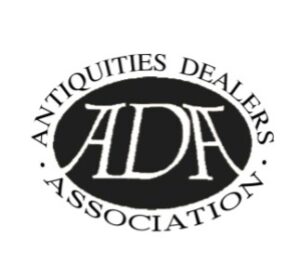
[99] BAMF website https://tbamf.org.uk/
[100] Prof. Raimund Karl, Bangor University, Wales, Kulturgüterschutz und Rechtsmissbrauch, 4 March 2020. https://core.ac.uk/download/pdf/287586336.pdf
[101] Official Journal of the European Union, Text for Regulation (EU) 2019/880, 17 April 2019. https://eur-lex.europa.eu/legal-content/EN/TXT/PDF/?uri=CELEX:32019R0880&from=EN
[102]Official Journal of the European Union, Charter of Fundamental Rights of the European Union (2012/C/ 326/02). https://eur-lex.europa.eu/legal-content/EN/TXT/PDF/?uri=CELEX:12012P/TXT&from=EN
[103] United Nations text for the Universal Declaration of Human Rights. https://www.un.org/en/universal-declaration-human-rights/
[104] 1970 UNESCO Convention list of Countries with dates of ratification and accession to the Convention in date order. https://pax.unesco.org/la/convention.asp?KO=13039&language=E
[105] Institute of Art & Law, Pierre Valentin and Fionnuala Rogers, Adoption of the Regulation on the Import of Cultural Goods: Start Preparing Now! https://www.artatlaw.com/adoption-of-the-regulation-on-the-import-of-cultural-goods-start-preparing-now/
[106] https://www.rand.org/pubs/research_reports/RR2706.html whose research suggests that ‘much of the market for looted goods is within the Middle East, including collectors and dealers in Turkey, Iran and the Persian Gulf States’ p.88.
[107] Antiquities Coalition. https://theantiquitiescoalition.org/about/mission-vision-values/
[108] RAND, p.11.
[109] RAND, p.49.
[110] US Rewards for Justice, Trafficking in Oil and Antiquities Benefitting the Islamic State of Iraq and the Levant (ISIL) https://rewardsforjustice.net/english/trafficking_oil_and_antiquities.html. The inclusion of antiquities with oil is clearly political with the size of these respective markets bearing no meaningful relationship to one another.
[111] Cultural Property News, Kate Fitz Gibbon, New York District Attorney Goes After Art Collections, February 11, 2018. https://culturalpropertynews.org/new-york-district-attorney-goes-after-art-collections/
[112] https://www.artsy.net/article/artsy-editorial-turkey-failed-halt-christies-auction-144-million-statue The statue had been in the US since at least 1966, some years prior to the 1970 UNESCO Convention to which the United States became a party in 1983.
[113] Center for Art Law, David Jenkins, Case Review: Republic of Turkey v Christie’s, 30 April 2020. https://itsartlaw.org/2020/04/30/case-review-republic-of-turkey-v-christies/
[114] The Art Newspaper, Riah Pryor, Aggressive seizures by police at Brafa leave dealers feeling ‘assaulted’, 2 March 2020. https://www.theartnewspaper.com/news/dealers-felt-assaulted-by-seizures-at-brafa
[115] The Journal of Cultural Heritage Crime, A Double Seizure of Antiquities at Tefaf 2020, 21 March 2020. https://www.journalchc.com/2020/05/21/a-double-seizure-of-antiquities-at-tefaf-2020-an-interview-with-the-experts/
[116] RAND, p.73.
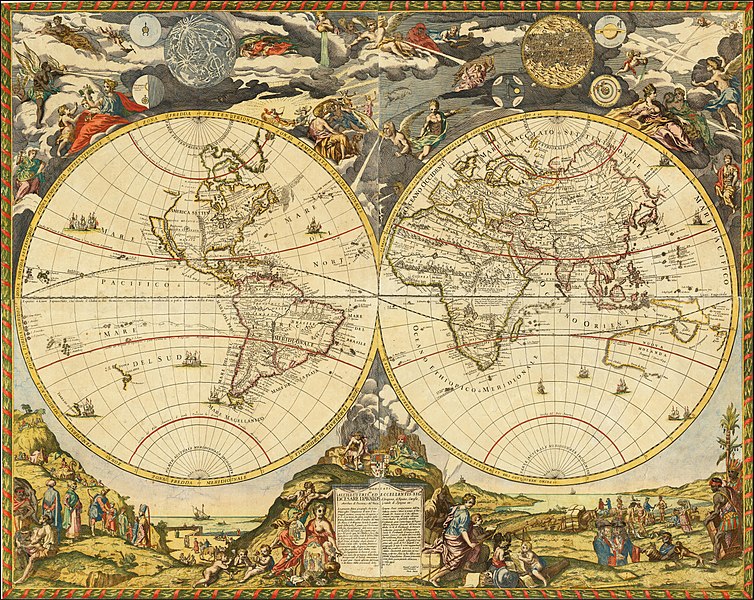 Paolo Petrini, Map of the World showing trade and varied cultures, 1700, public domain.
Paolo Petrini, Map of the World showing trade and varied cultures, 1700, public domain. 

